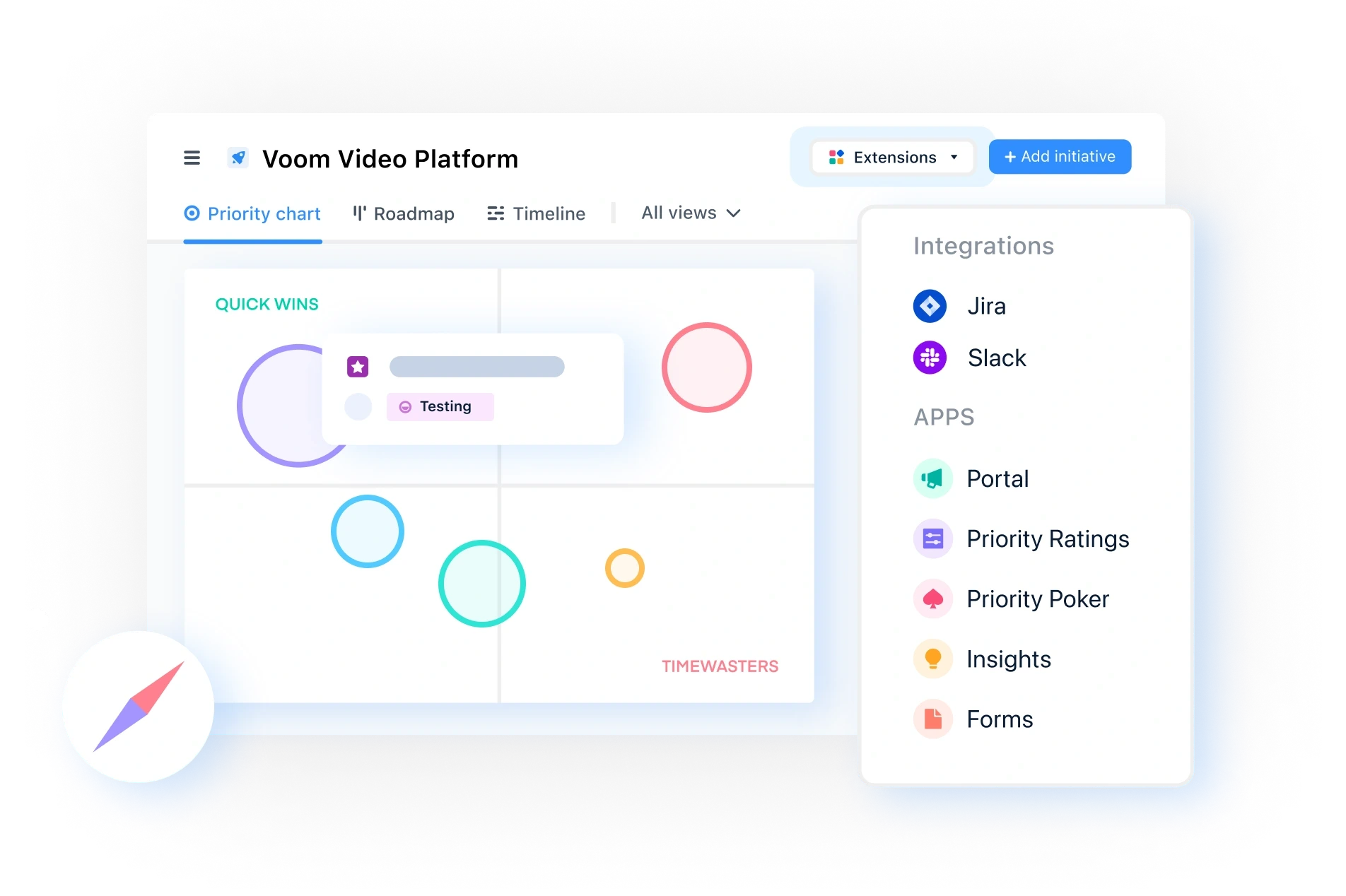
Good prioritization is very often the difference between success and failure.
Management legend Antonio Nieto-Rodriguez notes that in organizations where people prioritize properly, costs can be cut by up to 15%.
Prioritization is pivotal for every decision-maker to work efficiently. This may sound simple, but surprisingly, lack of prioritization in companies is all too common these days.
The Economist and Mathematician Helmar Nahr once said:
"Set priorities means to choose what is left undone" — Helmar Nahr
Weak decision-making is usually driven by a fear of cutting the wrong projects or a lack of trust in one's own decisions. This is very understandable when solid prioritization frameworks aren't put into place.
The good news: Prioritization done right can give you and your business a powerful competitive edge!
But doing it only once is not enough. There are countless internal and external factors that influence the decision-making process, so you need to be agile and responsive if you want to stay ahead. It's also important to take new learnings into account and optimize your strategy on an ongoing basis.
If you want to go to your boss next year and say something like: "I cut costs by 15%", you need to repeat and optimize the prioritization process regularly.
3 steps to routine prioritization
1. Develop a scoring model
To have confidence and trust in your own prioritization decisions, you need to have a solid prioritization framework in place. As you are an expert in your field, your gut feeling is precious. But you should always look to back it up with a framework that is as objective as possible.
One effective approach is to use a value vs. effort model that is quantitatively backed by weighted scoring. This method involves defining the value and cost drivers that reflect your current high-level goals.
Examples of value drivers are revenue increase and strategic fit.
Your resources are limited. You can look at development cost or marketing and sales spendings as your cost drivers.
The type and number of drivers that you include depend on the project and your business goals.

Find more detailed information about how to set up a prioritization model here.
You can create a scoring model yourself, or you can use an established software solution that will guide you through the whole prioritization process.
Getting to this point is the toughest part for a lot of people. Deciding to lead with data rather than a gut feeling is the first step on the road to effective prioritization.
2. Execute your prioritization process regularly
If you want to get the maximum benefit from your prioritization process and avoid expensive mistakes, you need to consider executing your prioritization process regularly.
There is no "one size fits all" formula for how often you should review the process. This comes down to the nature of your business, factors that can influence the process, and of course, the project in question. Invite the right collaborators and stakeholders to participate in your prioritization sessions and agree on subsequent check-ins to evaluate and optimize the process. Not only is their insight extremely valuable, but it also promotes accountability and buy-in when it comes to executing your goals later on.
3. Structure your prioritization and roadmapping meetings
In the prioritization session, you should consider the following steps:
Identification: Add new items such as projects, ideas, or features to your prioritization list.
Categorization: Sort your items. Have some of the projects highlighted in your previous meeting ticked off? Or perhaps they are not relevant anymore? Are there any smaller projects that need to be deprioritized?
(Re)evaluation: This involves updating the rating of your existing items and also rating the new ones.
Updates can be needed due to:
Environment: Changes in the market, adjustments of the general company strategy, or even legal restraints can influence the importance of items.
New information: As the project progresses, new information may surface that will cause you to readjust the rating.
When the scoring is done, your framework should be a solid indicator of what is important. Now is the time to discuss where you should allocate your resources and what's not worth the effort for now. Create an execution plan and timeline to keep your team on track.
Practical tip: Don't share your strategic priorities and roadmaps via email. You can't guarantee that your colleagues will find it in an overcrowded inbox and, they may not look at the most up-to-date version. Create a single source of truth somewhere in the cloud, where people can always find the latest roadmap.
Why prioritization boosts productivity
Remember, prioritization means cutting out or postponing projects, features, or initiatives that are not of immediate importance. Be honest with yourself. Taking on too many tasks will cause you and your team to scatter your efforts instead of focusing on the most meaningful work.
Transparency and visibility are key to make your prioritization efforts a success. Make sure you are clearly communicating your decisions and roadmap with your team. Employees work more productively when they have a thorough understanding of your strategy, so you can be sure that it's worth the effort.
Valentin Firak

Read also






Prioritize with confidence

Experience the new way of doing product management




